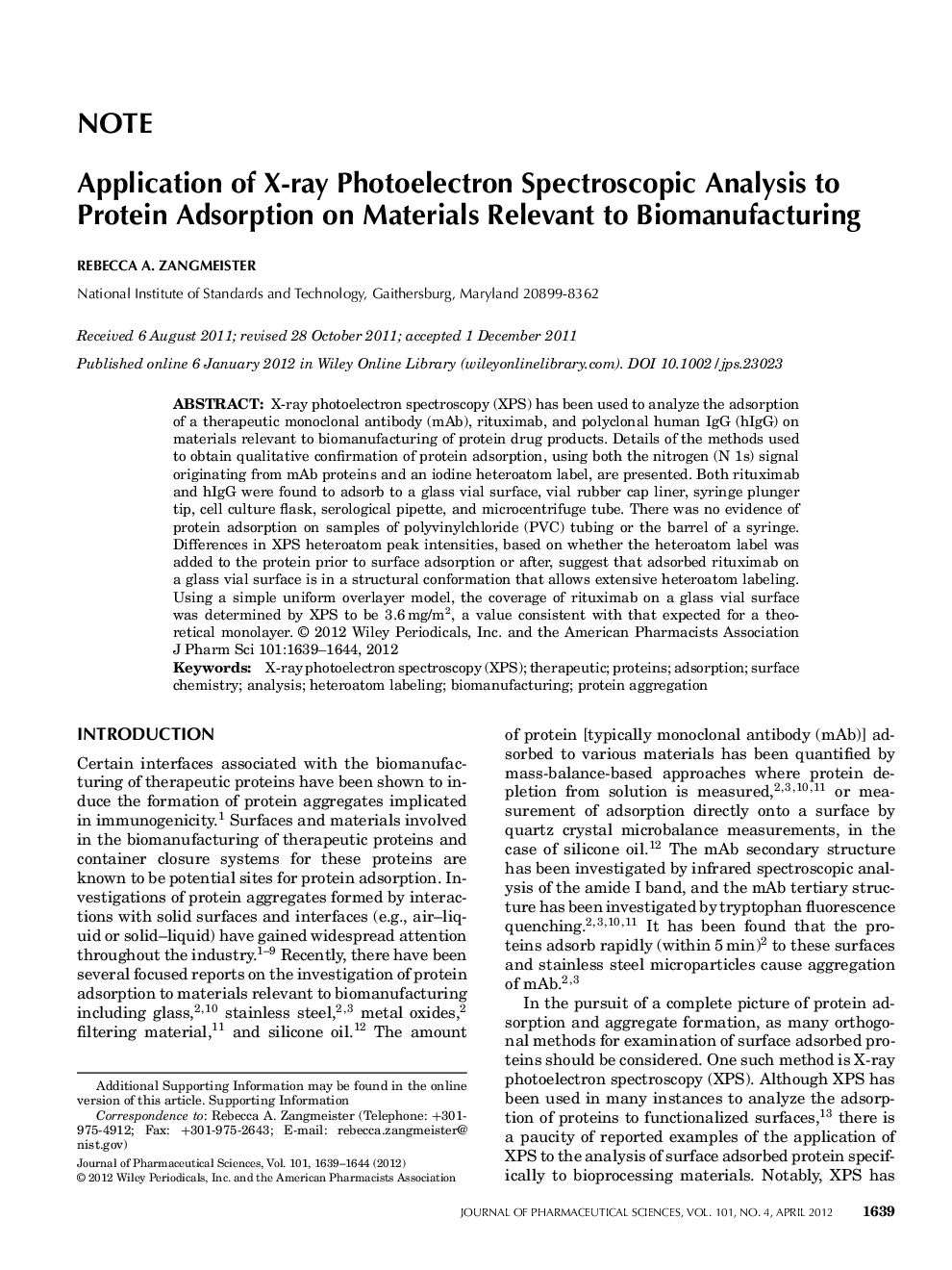| Article ID | Journal | Published Year | Pages | File Type |
|---|---|---|---|---|
| 2485864 | Journal of Pharmaceutical Sciences | 2012 | 6 Pages |
Abstract
X-ray photoelectron spectroscopy (XPS) has been used to analyze the adsorption of a therapeutic monoclonal antibody (mAb), rituximab, and polyclonal human IgG (hIgG) on materials relevant to biomanufacturing of protein drug products. Details of the methods used to obtain qualitative confirmation of protein adsorption, using both the nitrogen (N 1s) signal originating from mAb proteins and an iodine heteroatom label, are presented. Both rituximab and hIgG were found to adsorb to a glass vial surface, vial rubber cap liner, syringe plunger tip, cell culture flask, serological pipette, and microcentrifuge tube. There was no evidence of protein adsorption on samples of polyvinylchloride (PVC) tubing or the barrel of a syringe. Differences in XPS heteroatom peak intensities, based on whether the heteroatom label was added to the protein prior to surface adsorption or after, suggest that adsorbed rituximab on a glass vial surface is in a structural conformation that allows extensive heteroatom labeling. Using a simple uniform overlayer model, the coverage of rituximab on a glass vial surface was determined by XPS to be 3.6Â mg/m2, a value consistent with that expected for a theoretical monolayer.
Keywords
Related Topics
Health Sciences
Pharmacology, Toxicology and Pharmaceutical Science
Drug Discovery
Authors
Rebecca A. Zangmeister,
